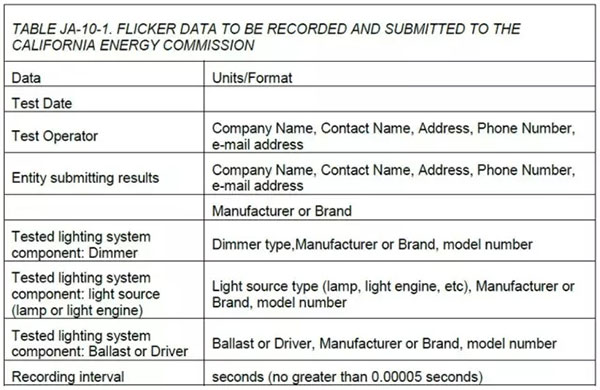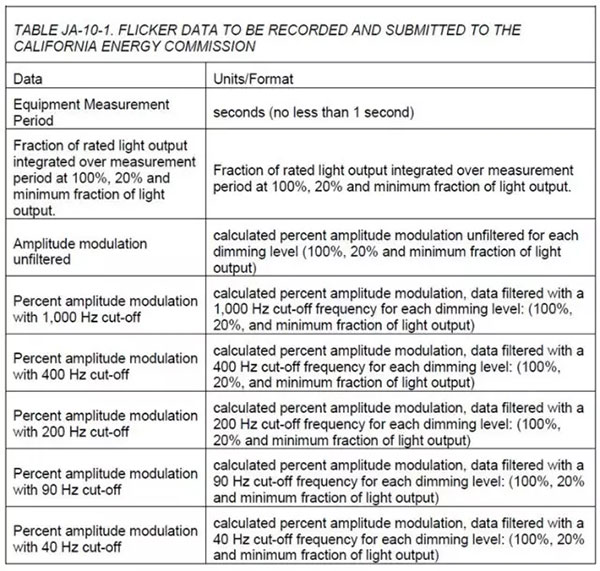High efficiency lighting source strobe test requirements
CEC Title24 in 2016 issued a new building energy efficiency regulations, regulatory requirements applicable to the efficient light source must meet the Joint Appendix JA8-2016 test and requirements. This regulation requires that the Flicker for efficient lighting sources be quantitatively tested and reported. Specific test methods and requirements refer to the appendix JA10-Test Method for Measuring Flicker of Lighting Systems and Reporting Requirements.
Theoretical Analysis of Stroboscopic Lighting Source:
Stroboscopic (Flicker) is the direct cause of light intensity caused by instability. However, the source of the fluctuation characteristics of the light output is that the light intensity or luminous flux changes with the periodic change of the current amplitude under AC or DC voltage driving. Combined with the human eye's ability to perceive the strobe, the study found that the following two factors play an important role in the perception of strobe.
1. The brightness amplitude of a light source, usually expressed as a modulation percentage of amplitude.
The higher the brightness of the light source, the critical flicker frequency will be increased accordingly.
2. Frequency
The frequency of the illumination source will make the human eye can notice the strobe amplitude percentage is different, usually the higher the frequency, the more difficult to feel the human eye strobe.
JA10 on the efficient light strobe test and reporting requirements:
Test light coverage:
TITLE 24 to meet the requirements of efficient light sources, including lamps, light and light engine.
Test the possible combinations of devices:
※ Light source and dimmer
※ Low-voltage light source, voltage regulator and dimmer.
※ light source and dimming control device.
※ light source, drive and dimming control device
※ light source, ballast and dimming control device
Applicable test equipment and environmental requirements:
※ Constant temperature test device. Temperature requirements 25 ℃ ± 5 ℃, to prevent external stray light.
※ fast photometric probe, the rise response time of not more than 10us.
※ Data acquisition oscilloscope, the system sampling time interval is not greater than 50us, the data recording frequency of not less than 20KHz, at least save within 1s of sampling data.
Operation
At each dimming level (100%, 20%, and minimum dimming level), the following test data processing and calculations are required:
Calculated as follows:
* In the time domain, the inverse Fourier analysis data conversion operation is required.
* The amplitude modulation percentage test and calculation are performed in the filterless and 40Hz, 90Hz, 200Hz, 400Hz, and 1000Hz filter frequency states, respectively.
The reporting requirements are as follows:



